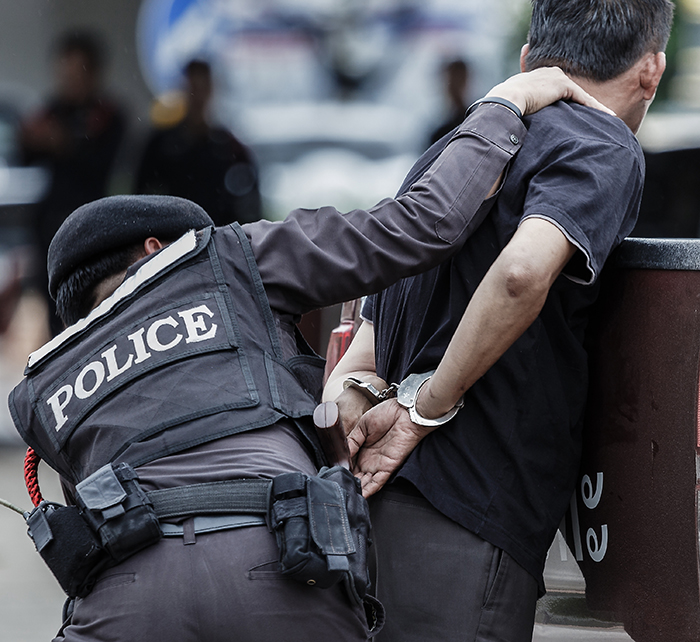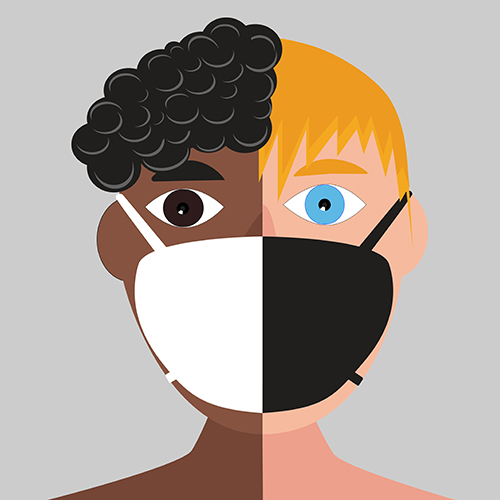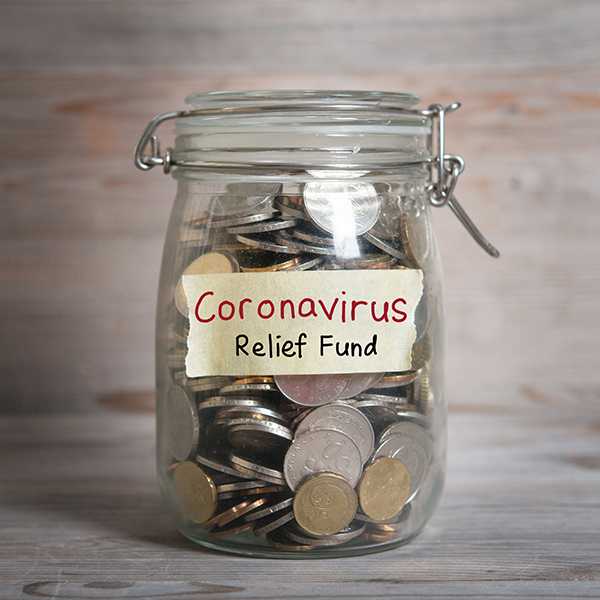If Seattle police budget is cut in half...
Posted on July 20, 2020
 The Future of Policing: As protesters across the country demand sweeping changes to law enforcement, The Seattle Times begins an examination of what that future could look like and the hurdles ahead. Today, reformers, community leaders and academics assess how social services would be provided if the police budget were radically cut.
The Future of Policing: As protesters across the country demand sweeping changes to law enforcement, The Seattle Times begins an examination of what that future could look like and the hurdles ahead. Today, reformers, community leaders and academics assess how social services would be provided if the police budget were radically cut.
What should the police do?
Should they enforce traffic laws? Rush to the scene of car crashes? To robberies? Respond to domestic disputes? Investigate homicides?
Try to prevent illegal drug sales? Offer aid to those in crisis?
Maybe they should do none of those things and just go away. Maybe they should keep doing all of them.
But as cutting the Seattle Police Department’s funding by half has emerged as a major demand of the protests that have dominated the city for more than two weeks, it’s crucial, academics and officials say, to have a frank discussion about what role police should play.
“It is time for us to do a paradigm shift and the only way that is going to happen is for folks to stop upholding systems that are not working,” said Katrina Johnson, whose cousin, Charleena Lyles, was killed by Seattle police in 2017.
One thing is clear: Cutting $200 million of SPD’s $400 million budget will mean fewer officers and it will mean many of the tasks police now performs will either have to be done by someone else or will have to be abandoned.
There is no way to achieve those kinds of cuts by looking for efficiencies or cutting out paramilitary equipment purchases. More than 80% of the department’s budget, about $335 million, goes to pay its 1,400 sworn officers and 600 civilian employees.
“It’s something we as a society, as a community, decides: What constitutes good policing, what do we want our police to do?” said Dennis Kenney, a professor at John Jay College of Criminal Justice. “We need an honest societal discussion in which the police are participants, but that’s all.”
The problem then, Kenney said, is how to address those things that the community agrees should not be a police issue.
The Future of Policing: As protesters across the country demand sweeping changes to law enforcement, The Seattle Times examines what that future could look like and the hurdles ahead.
“You can’t just say we’re going to do everything the police was going to do for half the money,” he said. “What happens when you have a dangerous mentally ill person on the corner and the police says this is not our problem?”
The push to defund comes amid a national outpouring of grief and anger, fueled by the repeated, caught-on-camera, killings of Black people by police.
King County has “been complicit in maintaining and perpetuating structural racism,” County Executive Dow Constantine said Friday.
“It is time for us to reimagine policing,” Constantine said, calling it “a once-in-a-lifetime opportunity to dismantle historically racist structures and create the nation we want.”
Seattle City Council members have expressed openness to significant cuts to the department’s budget. Three have said they want to cut it by half.
Mayor Jenny Durkan said last week that a 50% cut is not “responsible” but said the city needs to rethink the role of the police.
“We have put more and more work on police officers that we need to have in other places,” Durkan said. “We need to change the focus so that when people call 911 they don’t necessarily have a police officer show up.”
Protesters don’t envision $200 million simply disappearing. Rather, they see it being reinvested in social services, health care, housing and education programs, that would cover some of the services police are currently providing.
A lot of those services are not things the police are best suited for, but there’s just no one else available, said Chuck Wexler, executive director of the Police Executive Research Forum. Homelessness, addiction, mental health crises.
“The reason police handle those calls is because no one else is available in the middle of the night,” Wexler said. “You might want to send someone from a hospital or a mental health agency, they just have to be prepared to work 24-7.”
There are lots of areas of law enforcement that are not, at least initially, enforced by armed agents. Eric Garner was killed by New York City police in 2014 as they were arresting him for selling cigarettes without paying tax.
But the IRS doesn’t send armed agents to the homes of people who don’t file tax returns. Building code violations aren’t enforced by armed officers. Restaurant health inspectors don’t carry guns. Neither do meter maids.
“And yet for a broken tail light or your windows tinted too darkly we’ve decided the first enforcement step is going to be people with guns,” said Rosa Brooks, a professor at Georgetown University Law School and the author of a forthcoming book on the future of policing. “To me, it’s not fundamentally about let’s cut budgets by X percent, it’s more about let’s really rethink which tasks require a bunch of people with guns to show up and which tasks do not require that.”
Tracey Brame, associate dean at Western Michigan University’s Cooley Law School, said that after years of back and forth about over- and under-policing, the video of George Floyd’s killing and the images of police in military gear seemingly at war with their communities have pushed the pendulum all the way to one side.
“When I was a kid, my brother played football for the Police Athletic League,” Brame said. “Now the conversation in the Black community has flipped. I’m having conversations with my son about how he should be cautious with police officers. I’m trying to walk this tight rope.”
Brame said she sees the defund police conversation more as “dismantle and rebuild.”
“You shake up the way that business is being done and you rebuild it in such a way that it has community buy-in and support,” she said. “In such a way that police are seen as allies.”
That’s essentially what happened in the most commonly cited example of American police reform, Camden, New Jersey. Camden dissolved its Police Department, but did not defund it.
It reestablished its city Police Department as a county force, adopted new training methods and instituted new policies attempting to limit police use of force. It rehired many officers, circumventing the police union, and now has about twice as many officers as previously.
Brooks, a former Washington, D.C., police officer, estimated that 90% of her calls didn’t need an armed response — the threat of force. They were minor disputes, or an injured person who needed a ride to the hospital or checking up on a stolen car.
Similarly, about 90% of the crimes Seattle police have responded to this year have been nonviolent, according to department statistics.
“If you do have a gun, there’s a little bit more incentive to say ‘I’m done arguing with you, I’m done reasoning with you, do what I say because I have the gun,’ ” Brooks said.
That’s the kind of thinking Sue Rahr tries to discourage.
Rahr, a former King County sheriff and the executive director of the Washington State Criminal Justice Training Commission, oversees the training of every new law enforcement officer in the state.
They’re trying to train officers to deescalate situations. Buy time. Talk to people.
“Traditional police training focused on get in as quickly as you can and assert control right away,” Rahr said. “But if you have the opportunity to slow down the action and to create space and a place to shield yourself, you improve your chances of deescalating the situation.”
Still, Rahr thinks it’s “unrealistic and inappropriate” to ask officers to respond to dangerous situations without firearms.
“We are an extraordinarily armed nation,” Rahr said. “I’ve talked to colleagues from the U.K., where a lot of their police officers don’t carry firearms, but the majority of the public doesn’t carry firearms either.”
Rahr’s been focused on deescalation training, in some form, since 2013. That process accelerated with the 2018 passage of Initiative 940, which mandated mental health and deescalation training not just for new officers, but for veteran officers who may not have received it when they went through the academy decades ago.
“The deescalation training, I believe, is producing recruits that are better at critically thinking and looking at the right potential threats,” Rahr said. But she doesn’t know for sure.
The state currently has no way to reliably measure police use of force.
“We have no system for data collection so that we can analyze and learn,” Rahr said. “There’s no way to measure whether that training is effective or not.”
David Gutman: 206-464-2926 or dgutman@seattletimes.com; on Twitter: @davidlgutman
SEE ALSO:
More Race Relations Articles
Sexual Bias Articles
Mental Health Articles
How Drugs and Alcohol Affect the Brain and Body
WA. Counselor Directory: find a therapist near you
How helpful is this web page to you?
(and how can we can improve this page for you?)
not helpful
very helpful
Other Articles
Do you have an absolute right NOT to wear a mask when ordered?
Of masks and rights
“My body, my choice!” A refrain from the abortion-rights movement is now the battle cry of those insisting there’s a right against wearing masks or being vaccinated during a pandemic.... read more
I am a Black Police Officer. Here is How to Change the System.
Yes, defund the police. But then re-fund them, better.
NEWPORT NEWS, Va. — When I entered the police force in Virginia in 1987, I was one of the few Black officers in my department. On my first day on patrol, I was paired with an experienced white officer.... read more
Police attacks on journalists are attacks on us all
Opinion: Then they came for the journalists. In Minneapolis. In Detroit. In Los Angeles. In Cincinnati. In Asbury Park. In Des Moines. In Albuquerque. In Indianapolis. In Louisville. In Seattle. In D... read more
A monstrous breach of the First Amendment
“Congress shall make no law respecting an establishment of religion, or prohibiting the free exercise thereof; or abridging the freedom of speech, or of the press; or the right of people peaceably to a... read more
Racial Inequity of Coronavirus
Teresa and Marvin Bradley can’t say for sure how they got the coronavirus. Maybe Ms. Bradley, a Michigan nurse, brought it from her hospital. Maybe it came from a visiting relative. Maybe it was someth... read more
$40 million relief fund for undocumented immigrants
After months of talks with immigrant advocates, Gov. Jay Inslee is setting up a $40 million relief fund for people who can’t access federal stimulus programs because of their immigration status. Th... read more







